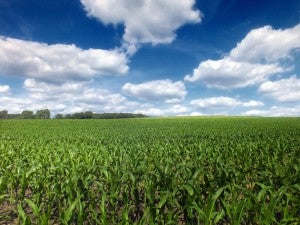
Credit: Flickr user Nicholas A. Tonelli
The U.S. Department of Agriculture just announced a new national climate strategy aimed at reducing emissions from the agriculture and forestry sectors. USDA will partner with farmers and ranchers on voluntary and incentive-based approaches to implement climate-smart agriculture techniques and programs. This approach will also ensure that crops are resilient to increasing fluctuations in weather and climates, and that farmers’ livelihoods are protected.
The new focus on ‘cooperative conservation’ is a huge step in the right direction.
America’s farmers face a challenge: increase productivity to feed a growing population, but do so in an era where climate is becoming increasingly unpredictable, with warmer growing seasons, droughts, and floods. Farmers are also called upon to increase production in a way that reduces greenhouse gas emissions. This is a tall order, given that if we continue with current farming practices agriculture could be responsible for 70 percent of the planet’s greenhouse gas emissions by 2050.
The good news is, farmers aren’t alone in this challenge.
No one farmer, government agency or company can stem emissions from agriculture. Feeding a growing population in ways that improve the environment will require unprecedented levels of collaboration between the public and private sectors.
It will also require innovation, which is why EDF supports fertilizer optimization programs like SUSTAIN, developed by United Suppliers. It’s a model that can be replicated across the country to help farmers reduce greenhouse gas emissions while maintaining or increasing their yields.
We’re also supporting the development of new programs that allow farmers to earn extra revenue for reducing their greenhouse gas footprint, through participation in carbon markets. These programs provide real incentives for using fertilizer more efficiently.
In the end we all win – a growing and resilient food supply, prosperous farmers and a stable climate.









